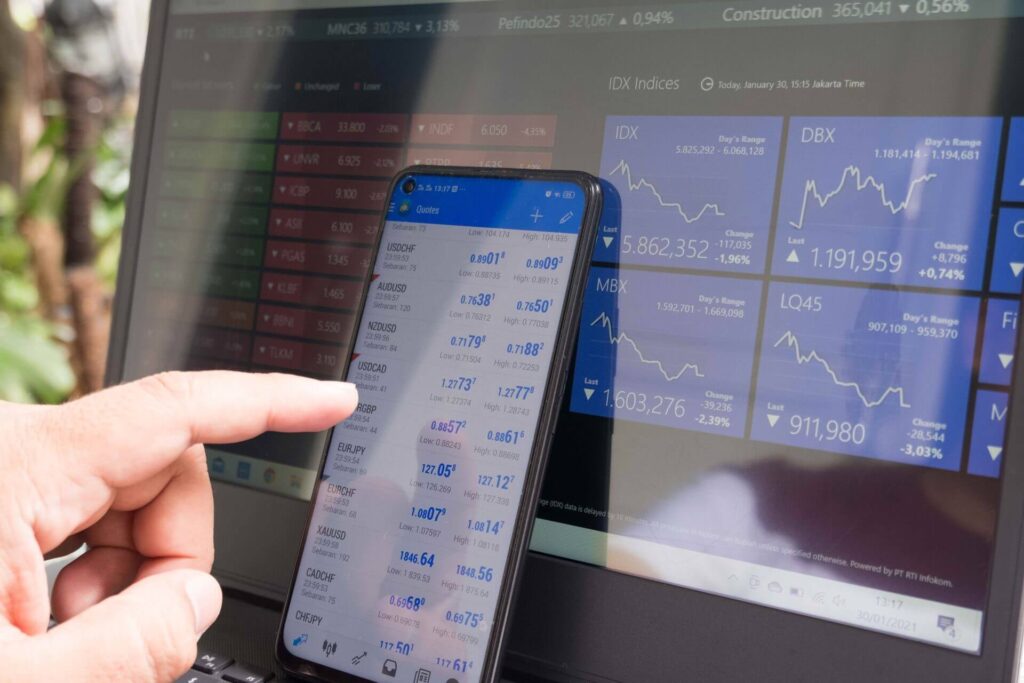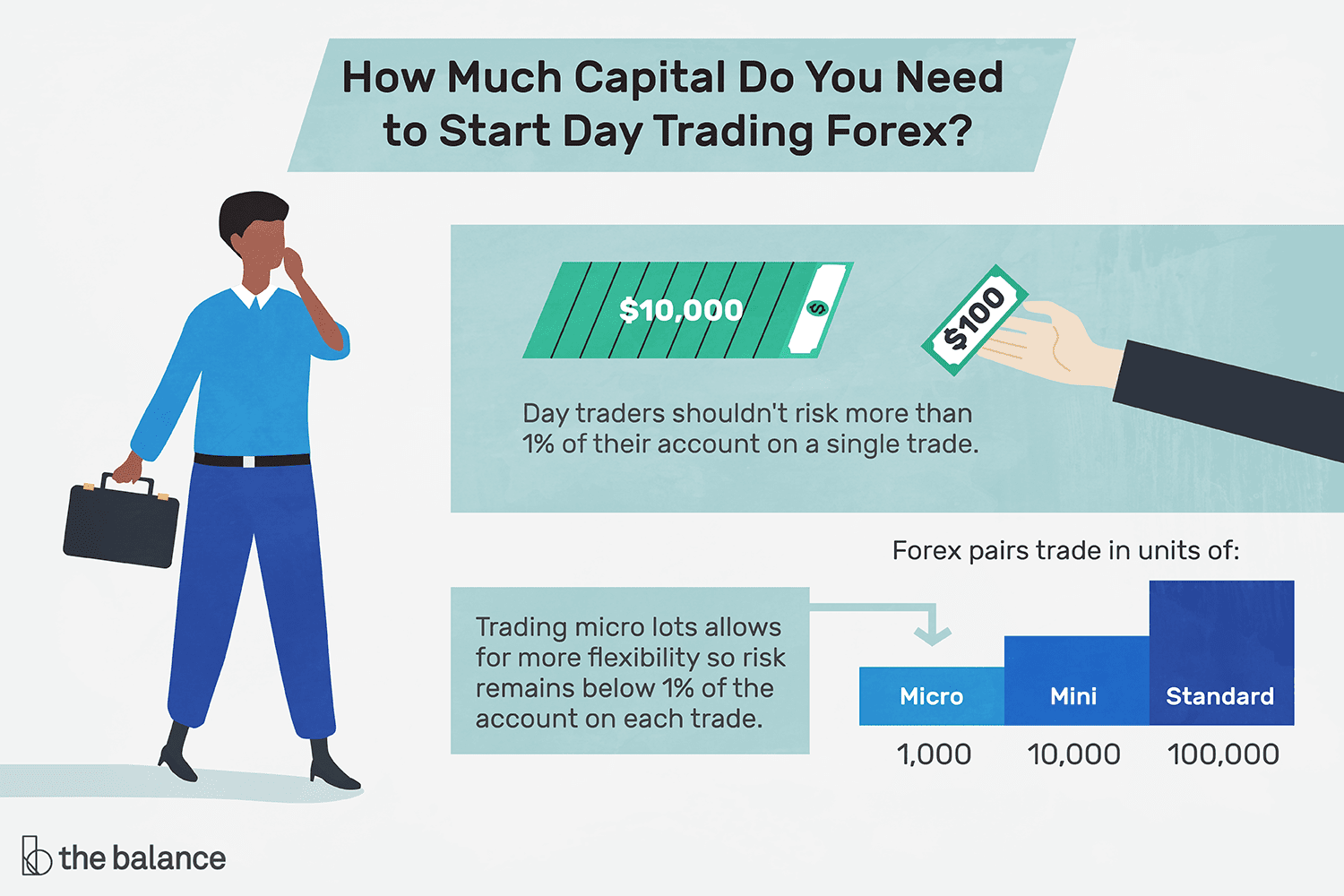
In the realm of finance, the foreign exchange market, commonly known as Forex, beckons with its tantalizing opportunities and potential rewards. For aspiring traders eager to venture into this dynamic arena, the question that reverberates is: “How can I start trading Forex?”
This article embarks on a comprehensive journey to illuminate the path from novice to seasoned trader, providing a step-by-step guide to navigating the complexities of Forex trading. From selecting a reputable broker to understanding the fundamentals of market analysis, this guide will empower you with the knowledge and tools necessary to embark on your trading odyssey.
Getting Started with Forex Trading: A Step-by-Step Guide
1. Understand the Basics of Forex Trading
Before diving into the world of forex trading, it’s crucial to grasp the fundamental concepts. This includes:
- What is Forex? Forex, short for foreign exchange, is the global marketplace where currencies are traded. You essentially buy one currency by selling another.
- Currency Pairs: In forex, you trade currencies in pairs. For example, EUR/USD represents the Euro (EUR) against the US Dollar (USD).
- Pips (Points in Percentage): Pips are the smallest unit of change in the exchange rate.
- Leverage: Leverage allows you to control a larger position than your initial investment, amplifying both potential profits and losses.
- Margin: Margin is the amount of money required to open and maintain a forex trade.
| Key Concept | Explanation |
|---|---|
| Forex | The global marketplace for trading currencies. |
| Currency Pairs | Two currencies traded against each other (e.g., EUR/USD). |
| Pips | The smallest unit of change in an exchange rate. |
| Leverage | Amplifies potential profits and losses. |
| Margin | The amount of money needed to open and maintain a trade. |
2. Choose a Forex Broker and Open an Account
Selecting the right forex broker is essential for a smooth and secure trading experience. Here’s what to consider:
- Regulation and Security: Choose a broker regulated by reputable financial authorities to ensure your funds are safe.
- Trading Platform: Opt for a broker with a user-friendly platform that meets your trading needs.
- Trading Instruments: Ensure the broker offers the currency pairs you want to trade.
- Spreads and Fees: Compare spread rates and other fees to minimize trading costs.
After choosing a broker, open an account by providing personal and financial information.
3. Develop a Trading Strategy and Manage Risk
A solid trading strategy is crucial for success. Here are key aspects:
- Technical Analysis: Utilize charting patterns, indicators, and other technical tools to identify trading opportunities.
- Fundamental Analysis: Consider economic news, political events, and other factors that can influence currency prices.
- Risk Management: Implement risk management strategies, such as setting stop-loss orders, to limit potential losses.
- Backtesting: Test your strategy using historical data to assess its performance.
Remember, consistent practice is essential for refining your trading skills and developing a profitable strategy.
How can I start forex trading as a beginner?
Choosing a Forex Broker
The first step in forex trading is to choose a reliable broker. There are many forex brokers available, so it is important to compare different brokers and choose one that meets your needs. Consider factors such as:
- Regulation: Choose a broker that is regulated by a reputable financial authority, such as the Financial Conduct Authority (FCA) in the UK or the National Futures Association (NFA) in the US.
- Trading platform: The trading platform should be user-friendly and provide the features you need, such as charting tools, order types, and market analysis.
- Spreads and commissions: Spreads are the difference between the bid and ask prices, while commissions are fees charged for executing trades. Look for a broker with competitive spreads and commissions.
- Customer support: Choose a broker with good customer support, in case you need help with your account or have any questions.
Learning Forex Trading Basics
Before you start trading forex, it is essential to learn the basics. Here are some key concepts to understand:
- Currency pairs: Forex trading involves buying one currency and selling another currency. The most traded currency pairs are the EUR/USD, USD/JPY, GBP/USD, and USD/CHF.
- Pip: A pip (point in percentage) is the smallest unit of price movement in a currency pair. It is typically the fourth decimal place. For example, a pip in EUR/USD is 0.0001.
- Lot size: A lot is a standard unit of trading volume in forex. A standard lot is equal to 100,000 units of the base currency.
- Leverage: Leverage allows you to control a larger position than your initial investment. For example, with 1:100 leverage, you can control $100,000 worth of currency with a $1,000 deposit.
Developing a Trading Strategy
Once you understand the basics of forex trading, you need to develop a trading strategy. A trading strategy should be based on your risk tolerance, trading style, and market analysis. Consider the following:
- Risk management: It is essential to manage your risk effectively. This involves setting stop-loss orders and limiting your losses on each trade.
- Market analysis: Use technical and fundamental analysis to identify trading opportunities. Technical analysis uses price charts to identify trends and patterns, while fundamental analysis considers economic data and events that can impact currency values.
- Trading style: Choose a trading style that suits your personality and time commitment. Some common trading styles include scalping, day trading, and swing trading.
Is $100 enough to start forex?
The short answer is: it’s possible to start forex trading with $100, but it’s not recommended. While some brokers offer minimum deposit requirements as low as $10, $100 might be enough to open an account and make a few trades. However, this amount is extremely limited, and you’ll face several challenges.
Why $100 Isn’t Enough for Forex Trading
- Limited Trading Power: With only $100, your trading power is very limited. You’ll only be able to open small positions, potentially limiting your profit potential.
- High Risk of Loss: Forex trading involves inherent risks, and with such a small capital, even a small loss can significantly impact your account balance.
- Lack of Flexibility: Having limited funds restricts your ability to diversify your trades, explore different strategies, and adjust to market changes.
What’s a Better Starting Point?
A more realistic starting point for forex trading is around $500 to $1,000. This allows for:
- Larger Positions: A bigger account balance grants you the ability to open larger positions, potentially increasing your profit potential.
- Greater Risk Management: A larger capital buffer provides more room for error and allows you to manage risk more effectively.
- More Trading Opportunities: With a larger account, you can diversify your trades across different currency pairs and strategies.
How much money do I need to start forex trading?

How much money do you need to start forex trading?
There’s no one-size-fits-all answer to this question, as the amount of money you need to start forex trading depends on several factors, including your trading style, risk tolerance, and desired leverage. However, you can start trading forex with a relatively small amount of money, as low as $100 or even less.
What is the minimum amount to start?
While some brokers might have minimum deposit requirements, you can usually start trading with a small amount, often around $100 or less. This small amount can be used to test the waters and learn the basics of forex trading without risking a large sum.
- Small initial investments allow you to learn the ropes of trading without significant financial risk.
- You can gain valuable experience with minimal capital before risking larger amounts.
- You can start small and gradually increase your trading capital as you become more experienced and confident.
How much money should I actually start with?
The ideal amount depends on your individual circumstances and trading strategy. Here are some factors to consider:
- Risk tolerance: How much are you comfortable losing? A smaller starting capital will limit your potential losses.
- Trading style: Some trading strategies require larger capital than others, particularly those involving high leverage or larger position sizes.
- Leverage: Forex trading often involves leverage, which allows you to control larger positions with a smaller amount of capital. However, leverage can also amplify losses.
- Desired profits: Your desired profit targets and the frequency of your trading will influence how much capital you need to achieve your goals.
How to manage your money effectively?
Managing your money effectively is crucial for successful forex trading. Here are some essential tips:
- Develop a trading plan: This should include your entry and exit points, risk management strategies, and profit targets.
- Stick to your plan: Avoid emotional trading decisions and stay disciplined with your pre-defined plan.
- Risk management: Implement stop-loss orders to limit your potential losses on each trade.
- Avoid overtrading: Don’t overextend yourself financially by trading too many positions at once.
- Diversify your portfolio: Consider trading multiple currency pairs to reduce overall risk.
- Continuously learn and adapt: The forex market is constantly evolving, so staying informed and adjusting your strategies is essential.
Can I learn forex trading on my own?

Yes, you can absolutely learn forex trading on your own.
While having a mentor or taking a structured course can be helpful, it’s definitely possible to become a successful forex trader through self-study. The forex market is vast and complex, but with dedication and the right resources, you can gain the knowledge and skills needed to trade effectively.
How to Learn Forex Trading on Your Own
- Start with the Basics: Begin by understanding the fundamental concepts of forex, such as currency pairs, pips, leverage, and margin. There are numerous free online resources available, including articles, videos, and tutorials.
- Practice with a Demo Account: Once you have a grasp of the basics, open a demo account with a reputable forex broker. This will allow you to trade with virtual money and test your strategies without risking real capital.
- Develop a Trading Plan: Before you start trading with real money, create a well-defined trading plan. This should include your trading style, risk management strategy, entry and exit points, and profit targets.
- Keep Learning and Adapting: The forex market is constantly evolving, so it’s important to stay up-to-date with current trends and market analysis. Continue learning from experienced traders, attending webinars, and reading financial news.
Tips for Success
- Be Patient and Disciplined: Learning forex trading takes time and effort. Don’t expect to become profitable overnight. Be patient, stick to your trading plan, and manage your risk effectively.
- Focus on Risk Management: One of the most crucial aspects of forex trading is risk management. Always set stop-loss orders to limit potential losses and never risk more than you can afford to lose.
- Develop a Trading Journal: Keep a detailed record of your trades, including entry and exit points, profits, losses, and reasons for each decision. This will help you identify your strengths and weaknesses and improve your trading strategies.
Frequently Asked Questions
What is Forex trading and how does it work?
Forex trading is the act of buying and selling currencies in the global foreign exchange market. It is the largest and most liquid financial market in the world, with trillions of dollars changing hands every day. The basic principle of Forex trading is to profit from the difference in exchange rates between two currencies.
For example, if you believe the US dollar (USD) will strengthen against the Euro (EUR), you would buy USD and sell EUR. If your prediction is correct, the USD will appreciate in value relative to the EUR, and you will make a profit when you sell your USD back for EUR. Conversely, if you believe the USD will weaken against the EUR, you would buy EUR and sell USD.
Forex trading is typically done through online trading platforms, which allow you to access the market and place trades. These platforms typically offer real-time quotes and charts, allowing you to monitor market movements and make informed decisions.
It’s important to note that Forex trading is a highly volatile market, and there is always a risk of losing money. Therefore, it is essential to do your research, understand the risks involved, and develop a solid trading strategy before you start trading.
What are the benefits of Forex trading?
Forex trading offers a range of benefits, making it an attractive investment opportunity for many traders:
High liquidity: The Forex market is the most liquid financial market globally, meaning you can easily buy and sell currencies without impacting the price significantly.
24/5 trading: Unlike traditional stock markets, the Forex market operates 24 hours a day, 5 days a week. This allows you to trade at any time, regardless of your location or time zone.
Low trading costs: Forex trading typically has lower commissions and fees compared to other financial markets, making it accessible to traders with different budgets.
Leverage: Forex trading allows you to use leverage, which means you can control a larger position with a smaller investment. However, leverage can also amplify both your profits and losses.
High potential returns: The volatility of the Forex market can provide opportunities for significant profits, especially for skilled traders who can predict market trends accurately.
However, it’s essential to remember that these benefits come with risks. Forex trading is a complex and volatile market, and it requires thorough research, a sound trading strategy, and proper risk management to be successful.
How do I get started with Forex trading?
Getting started with Forex trading involves several steps:
1. Choose a Forex broker: The first step is to select a reputable and regulated Forex broker that offers a trading platform, competitive trading conditions, and educational resources.
2. Open a trading account: Once you have chosen a broker, you need to open a trading account by providing your personal information and financial details.
3. Fund your account: Deposit funds into your trading account to begin trading.
4. Choose a trading platform: Most brokers offer a choice of trading platforms, including web-based platforms, mobile apps, and desktop software. Choose a platform that suits your trading style and preferences.
5. Learn about Forex trading: Before you start trading, it’s crucial to educate yourself about the Forex market, its dynamics, and the risks involved. You can access various educational resources, including online courses, webinars, and books.
6. Develop a trading strategy: It is essential to have a well-defined trading plan, including your entry and exit points, risk management strategy, and profit targets.
7. Start with a demo account: Most brokers offer demo accounts that allow you to practice trading with virtual money without risking real capital. This is a valuable tool to test your trading strategy and gain experience before trading live.
8. Start trading live: Once you are comfortable with the trading process, you can start trading live with real money. However, remember to start small and gradually increase your trading size as you gain experience and confidence.
What are the risks associated with Forex trading?
Forex trading, like any other financial market, comes with inherent risks. It’s crucial to understand these risks and implement proper risk management strategies to minimize potential losses. Here are some of the major risks associated with Forex trading:
Market volatility: The Forex market is highly volatile, meaning prices can fluctuate significantly in a short period. This volatility can lead to sudden and unexpected losses.
Leverage: While leverage can amplify profits, it can also significantly magnify losses. Using leverage without proper risk management can lead to substantial financial losses.
Counterparty risk: When you trade Forex, you are dealing with financial institutions that act as counterparties to your trades. There is always a risk that your counterparty may default on their obligations, leading to financial losses.
Economic and political events: Global economic and political events can significantly impact currency exchange rates, leading to unexpected market movements and potential losses.
Fraud and scams: The Forex market attracts scammers and fraudulent schemes, so it’s essential to choose a reputable broker and be wary of any suspicious offers or promises.
To mitigate these risks, it’s essential to adopt a disciplined approach to Forex trading, including proper risk management, thorough research, and continuous education. Diversifying your trading portfolio, using stop-loss orders to limit losses, and avoiding overtrading are also crucial aspects of responsible Forex trading.